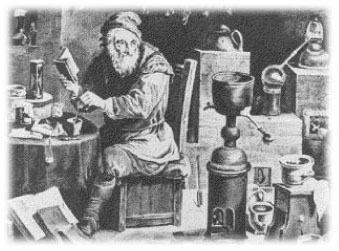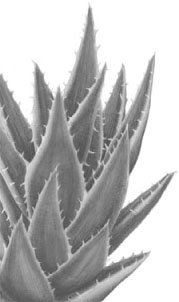—Atharva Veda
An open mind is the moral essence of medicine.
—Dr. Taro Takemi, M.D., President, World Medical Association
Traditional herbs have supported wellness throughout the ages
As the world’s major food source and its only oxygen source, plants make animal life possible. Our hunter–gatherer ancestors used all types of plants in their daily lives, and early in the history of the human race they learned - through trial and error - that certain plants could be used to support wellness. It probably did not take many exposures to rhubarb or prunes, for example, to figure out their effects on bowel function.

Ancient people all over the world quickly identified an interesting category of plants - herbs - which could be used to nourish and revitalize the body. Some herbs are foods. (Certain fruits, vegetables, and nuts, for instance, are herbs.) From spices such as mint, basil, parsley, ginger, and rosemary, to flavourful vegetables such as garlic, onions, and radishes, to beverages such as tea and coffee, herbs are a tasty part of our daily lives. Other herbs, historically used to enhance wellness, have no dietary connection whatsoever: St. John’s Wort, Saw Palmetto are two examples. Still other herbs, such as liquorice root, cranberry and aloe vera, have been used both as foods and wellness enhancers.
Herbal preparations, usually made from roots, flowers, barks, or their extracts, were the only effective remedies available to our ancestors. People handed down their herbal knowledge from generation to generation. Over the years, a wealth of information accumulated and the benefits of certain herbs became well-established. Yesteryear’s folk remedies evolved to become today’s herbal preparations and pharmaceuticals. The same active ingredient that our ancestors drank in willow bark tea to relieve their headaches, for instance, is found now in aspirin. Today 30 percent of conventional drugs are derived from plants. And in spite of the cornucopia of modern medicines, billions of people - more than 80 percent of the world’s population! - still rely primarily on herbs to enhance their wellness and meet their healthcare needs.
A history of Herbology
For thousands of years, herbs have been used safely and effectively to enhance wellness:

- Anthropological evidence indicates that even our hunter-gatherer ancestors used herbs to their advantage. Even more amazing, humans may not have been the first species to make use of herbs. Scientists studying primates in Tanzania have found nearly a dozen nonfood plants in use among chimpanzee populations. One of these plants, an indigestible leaf with bacteria-killing ability, has been used by African peoples to treat wounds and stomach aches.
- One of the earliest written records of herbs is China’s Pen-Ts’ao Kang-Mu (3737 BC), a compendium of 8,160 prescriptions mostly prepared from plants.
- Herbs played an important role in ancient tablets and writing from Mesopotamia, Egypt and Persia. They are mentioned throughout the Bible, as well as in Egypt’s Ebers Papyrus and Smith Papyrus, both named for their discoverers, which described herbal remedies for various conditions, including ringworm and fluid retention.
- Herbal practitioners in India, the origin of many spices and medicines, made significant contributions to botanical knowledge. About 5,000 years ago the Veda outlined numerous natural remedies.
- The ancient Greeks, too, had a rich herbal tradition: Hippocrates (460-377 BC), the “Father of Medicine,” wrote about a number of healthful plants, as did Dioscorides, who in AD 78 published the five-volume De Materia Medica describing beneficial uses for hundreds of plants.
- Likewise, Roman physician Claudius Galenus (better known as Galen, AD 130-200), whose ideas dominated medicine for 13 centuries, published 11 books on health- supporting plants.
- Native American peoples are famous for their wisdom in using herbs and other plants to support health.
- Europeans (notably the British, Germans, Italians, and French) have a long tradition of employing herbs to enhance wellness.
Modern trends in herb use
Today herbs continue to grow in popularity as people seek ways to support health naturally and gently. Ethnic herbal practices - Native American, Chinese, Ayurvedic (Indian), African, European, etc. - have garnered tremendous attention as people worldwide are becoming more proactive in finding alternative approaches to their health care needs. An ounce of prevention really is worth a pound of cure, and certain herbs could play important roles in enhancing wellness. Recently folk remedies from Africa to the Americas to Asia gained a measure of legitimacy when the World Health Organization adopted a resolution calling for governments to incorporate traditional medicines, including herbs, into their national health care systems.
Researchers have begun the daunting task of identifying, isolating and concentrating the active ingredients in thousands of herbs and they can now explain, biochemically and physiologically, how these herbs work. And work they do. Herbs have proven so successful as sources of effective ingredients that today’s drug companies often look first to traditional places, such as the rain forest and traditional healers, such as shamans, for clues to guide their drug-development efforts. But while whole herbs contain active ingredients which can be isolated, mimicked and patented, drug companies have little to gain by studying them, as plants per se cannot be patented and sold exclusively. The result? Herbal preparations are based on whole plants as they exist in nature and thus contain many active ingredients, whereas drugs are isolated chemical ingredients. The big difference between herbs and medicines, however, is that herbs are employed to maintain wellness and prevent disease, whereas medicines are used to cure diseases after they have developed.
Researchers are just beginning to discover the scientific basis for the benefits of herbs that have been used for thousands of years, such as ginger, liquorice root, ginseng and aloe vera. In traditional Asian medicine, for instance, ginseng is used to “strengthen mentality, relax, and calm the nerves.” Likewise, many studies of the effect of St. John’s wort on mood have yielded promising results, and it is currently a topic of investigation at the U.S. National Institutes of Health. Saw palmetto has garnered similar attention for its role in supporting male physiology, and aloe vera for its soothing characteristics. In scientific studies of traditionally valued herbs, the facts have tended to substantiate the folklore.

Wellness versus Health
While nutrients support health, herbs enhance wellness. Whereas health is freedom from any symptoms of disease, wellness is freedom from other conditions - irregular sleep cycles, allergic responses, menstrual irregularities, digestive tract complaints, etc. - that keep us from feeling our best. As such conditions are common, herbal preparations tend to be broad-based enough to benefit large segments of the population.
Can you be healthy but not well? Yes! You could be lacking symptoms of any disease. You could be receiving all the nutrients you need. But you might not be feeling 100 percent well. Consider the example of a man who eats right, takes supplements to make up for dietary shortfalls, exercises regularly, lives a healthy lifestyle, but has trouble sleeping at night. He would be healthy - free of disease symptoms - but because he is not sleeping well, he will not feel well. Sleeplessness is not a disease. It is not even a condition for most people - it is just something they live with. In this case the object of an herbal preparation is not to treat insomnia or sleep disorders requiring medical attention. The object is to help the average person who is sleeping but is not getting all the rest he or she needs. In essence, the herb that is able to help them sleep is serving as a wellness enhancer.
Consider as a second example a healthy woman who, come every spring, is sensitive to pollen in the air. Again, she is healthy, but again, she is not as well as she could be. Perhaps herbs may be of benefit in decreasing her sensitivity to pollen. Or, in another scenario, this healthy woman may have a more dramatic menstrual cycle than average. Maybe her discomfort is not severe enough for a visit to the doctor, hormone therapy, or drugs, but it detracts from her sense of wellness. Perhaps herbs could support the natural ability of her body to normalize her cycle. Similarly, a person who is experiencing digestive complaints may not have any disease, but could experience enhanced well-being with herbs that support elimination.
Over the course of years, the imbalances that compromise wellness may erode health. Enhancing wellness is a step towards feeling better and achieving improved health.
Ancient Wisdom + Modern Science = GNLD’s Herbal Alternatives
For centuries, many civilizations have worked to master the art of herbalism. Many nutritional companies in turn have tried to capture the essence and benefits of ancient herbalism, but few have succeeded. Each step, from harvesting through final packaging, has a critical impact on the quality and benefits delivered in the final product. Three problems have stood as unsurpassable obstacles to delivering the complete benefits that herbs have to offer - ensuring their potency, purity and consistency. With the introduction of Herbal Alternatives, GNLD has developed manufacturing technologies that overcome these traditional obstacles and allow us to guarantee the purity, potency and consistency of every GNLD herbal supplement.
GNLD Herbal Alternatives are simply the best herbal supplements available today. Our unique and exclusive formulations bring you the best of the great herbal traditions of the world to help support your everyday wellness needs.